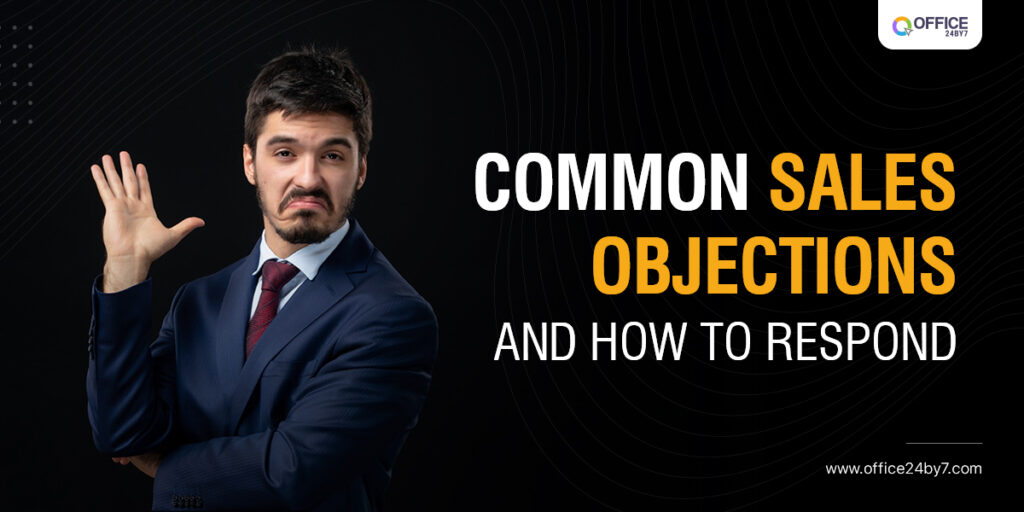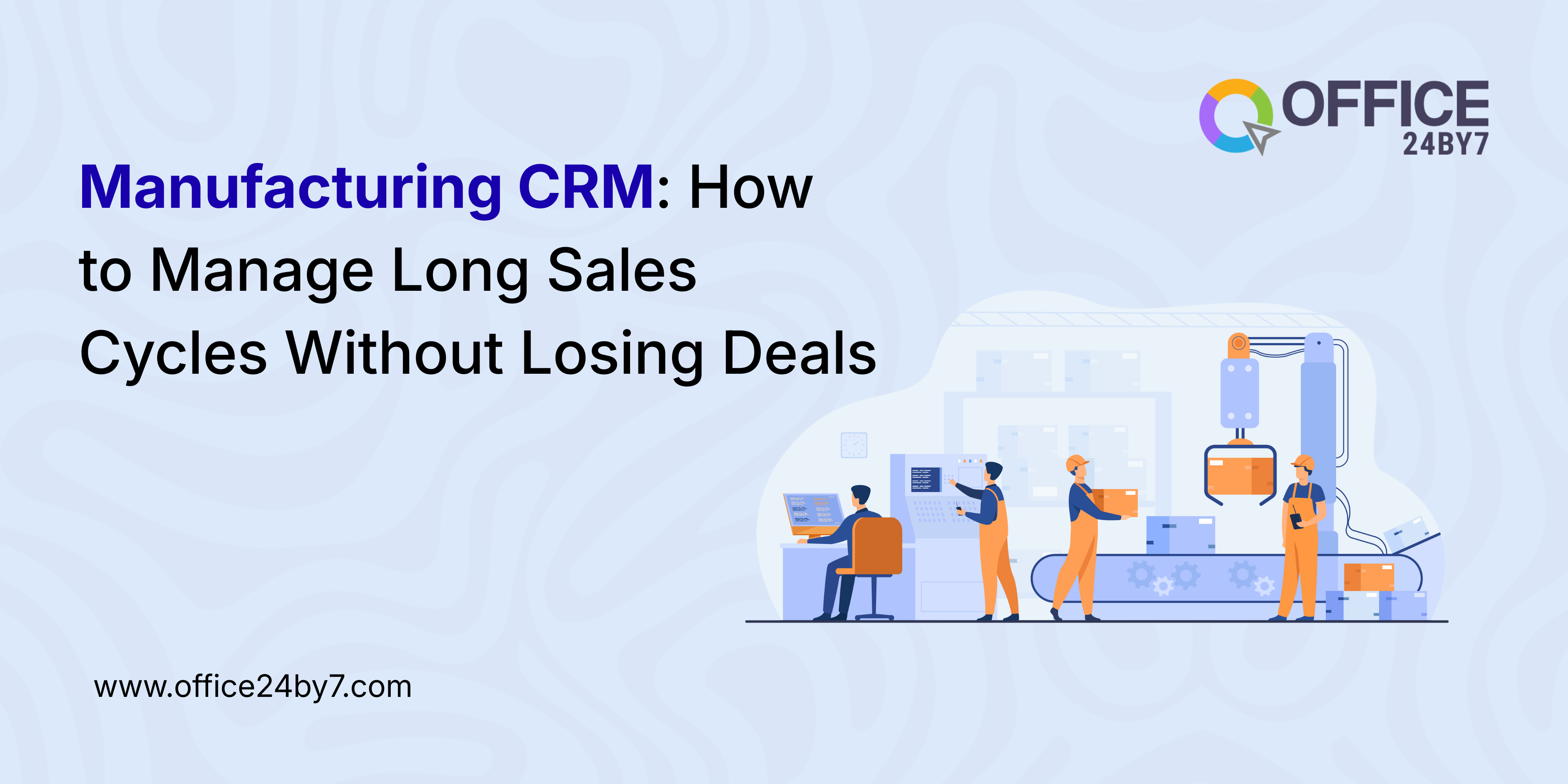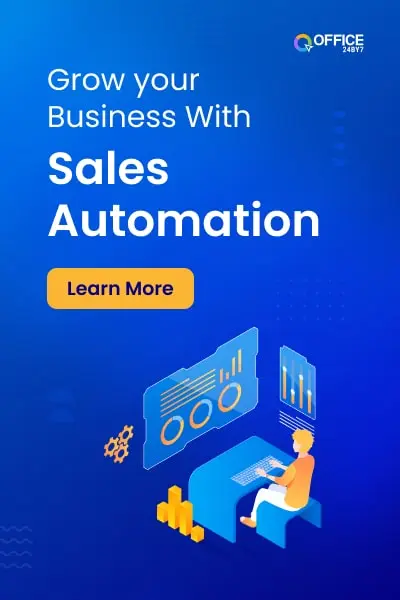
Not sure if this blog about sales objections would interest you?
Try our 1 minute short audio summary to decide. 🎧
And when you had just thought that everything went well in the sales discussion and you finally have made the customer say ‘Yes’ to a deal, then suddenly here it comes. An Objection! Sales objections are an inevitable part of the sales process and they can be tied up to anything on this planet to stop your deal from getting on. When leads are nurtured well and are moved significantly enough into the sales funnel the objections are perhaps the same set of ones in every case. It may be about price, timing, product fit, and a handful of other roadblocks.
However, with the right approach and the right software like a sales CRM software, they can become opportunities to deepen your relationship with the prospect and move closer to closing the sale. Understanding the difference between genuine objections and simple obstructions is key to handling them effectively.
In this blog, we’ll be addressing all those types of possible objections that sales teams commonly face and devise a strategy to address such situations. From budget concerns to skepticism about your product’s value let’s check the list of all your pain points.
What Are Sales Objections?
Sales objections occur when potential customers hesitate or decide not to buy from you. This could be due to budget disagreements, missing features, a competitor’s lower-priced offer, or simply because the lead lacks the authority to purchase.
It’s disappointing when a deal seems to slip away after all your hard work. However, objections can help you learn more about your customers’ needs. By addressing these concerns, you might still turn the situation around and close the deal.
For example, an objection is, “I see that your product is good, but I’m not sure about buying it because of this reason.”
When your customers say something different from your perspective, instead of telling them that they‘re wrong, you need to let them organically come to a different conclusion on their own. And if you can’t persuade them, that‘s a good sign they’re a poor fit.
What Are Sales Obstructions?
Meanwhile, there is another situation called sales obstructions or brush-offs. While objections can have authentic reasons, brush-offs are simply excuses. And it could be something like, “I don’t want to talk to you.”
This can be because they simply are not ready to get it from you due to reasons that they cannot disclose, perhaps something like they have parallel talked with your competitor and they like that deal better.
Types of Sales Objections
The BANT is not just a criteria that the sales teams use to qualify a lead but also an acronym that can help you remember the four most common types of sales objects. BANT stands for Budget, Authority, Need, and Timing.
Let’s get a deeper look at these:
Lack of budget
“We don’t have the money to buy.”
When a prospect objects to the price, first ask yourself if it’s genuinely too high or if they just don’t see the value in your product. Instead of immediately offering a discount, focus on highlighting your product’s unique value and how it solves their problems. Emphasize key features, and excellent customer service, and use social proof, like positive reviews or case studies, to show the benefits. This approach can help change their perspective and keep the deal on track.
Get a Great Call Center Set Up For Your Business!
All the favorite features with a great interface at affordable rates for businesses of all sizes. Get your free demo today!
Lack of authority
“I’ll have to speak to my boss about this.”
This type of sales objection could mean something entirely different. Ask yourself if the prospect truly lacks authority or if they don’t trust your company. If they’re unsure about your brand, use social proof—like case studies—to build trust. If it’s a matter of authority, focus on turning the prospect into an advocate for your product by emphasizing how it can make their job easier. If done well, they might help you gain the approval you need from the final decision-maker.
Lack of need
“We don’t need something like this at (company) right now.”
What seems like a sales objection is an opportunity! When prospects say they’re too busy, they might not yet see how your product can help them. To overcome this, qualify the prospect by asking open-ended questions to understand their needs and challenges. If your solution fits, explain in detail how it can address their specific problems.
🏆 You May Also Like Call Center on Cloud- Why Does Your Business Need It?
Lack of urgency
“Fixing (problem) isn’t our top priority right now.”
Another one of the types of sales objections that you will need to take a closer look at. Is it because they do not have the time or need? Or are they simply trying to get rid of you? To clarify it is better that you ask them if the opportunities that you see are not important to them at the moment and what they are focussing on instead. If there are other pain points that you are not aware of you might be able to help there. Or else you could try and reschedule a meeting at a time when they see fit.
Top 20 Most Common Sales Objections and Rebuttals
Here is the most awaited section of this blog: The top 20 most commonly faced sales objections and rebuttals that you can count on to work in your favor.
1. I don’t want to sign a long-term contract.
Response:
I understand. Why don’t we talk about some different contract terms and payment schedules? Perhaps these would be a better fit.
2. We’re using your competitor.
Response:
And how is the product working out for you? If you don’t mind, is there anything in particular that you choose (competitor)? (Wait for their response and then rebuttal with how your product is more valuable).
3. The (Competitor) is cheaper.
Response:
Yes, [Competitor] may offer a lower price point, but this comes at the cost of essential [features]. Renowned companies like X, Y, and Z have successfully leveraged our product to achieve [desired outcome]. Rather than settling for a product that merely fulfills your basic needs, consider the long-term value and proven results our solution offers.
4. The ROI is not worth consideration.
Response:
Is it possible for you to be available for a more detailed call this week? Perhaps I can take you through the product with some real-life scenarios and then we can do a real-time demo? I‘d love to show and explain why it’s worth your time.
5. I’m not interested.
Response:
No problem, [first name]. It was good talking to you. I can send you some info about our company and product. If you change your mind, just let me know.
6. I’m busy.
Response:
I completely understand. So let me make this quick. If you’re interested I’ll email you more information, if not I won’t call again. How does that sound?
7. How did you get my information?
Response:
I came across your website while researching and thought I’d reach out because I believe our (product) would be a great fit for your (company name).
8. I’ve never heard of your company.
Response:
We’re a company that (explain your product). I’d love to chat with you regarding (pain point) and how we can help tackle it.
9. This looks too complicated for my team to learn.
Response:
Could you point me to the specifics that look complicated? I can help simplify that for you.
🔍 You Can Also Read Buyers Guide to Purchase Call Center Software
10. We’re using this budget elsewhere.
Response:
No problem. If you’re curious, why not try our product for free? You can test it out and see if it’s right for you. It’s a great way to decide if you want to consider something like it.
11. Can you call me back next quarter?
Response:
Sure! Before I go, I’d like to get a sense of where you’ll stand next quarter. Do you think there is an option where I can enlighten the team and perhaps get them acquainted by that time so that the discussions go great?
Using an efficient sales automation system like a sales CRM you can set up call reminders for a particular date or time as suggested by the lead. This can help you get notified when the lead would be possibly available for a discussion.
12. This is too expensive.
Response:
We are packing the best features for all our clients at a reasonable market rate but if you think so, why don’t I give you a real-time demo of what you will be receiving? Perhaps you can agree with us more?
13. You don’t have (feature).
Response:
Have you heard of our (partner/integration)? Many of our current customers are using it and we’ve had great feedback.
14. I’m going to get some quotes for comparison.
Response:
I’m convinced that we’ll be able to save you money, just like we do our other clients. But I understand that you would need to compare. We would also like our client to do that to understand us better. May I ask the specifics of other quotes you’ll be getting if you don’t mind?
15. We’re happy with the way things are.
Response:
Thats great! We really see your business doing its best. But we still see how some opportunities like solving your (pain point). What about we discuss something about that?
Attend to All Incoming Calls!
Create your IVR setup with Offcie24by7 and enjoy intelligent automatic call distribution along with caller tracking and extensive analytics. Get your free demo today!
16. We don’t have a big enough team for this.
Response:
Totally. The whole point of getting our product would be to eliminate the burden of your existing workflow. So if you could enlighten me regarding your current teams’ day-to-day responsibilities, I would love to explain how our product once adopted can alleviate a lot of problems.
17. Beep, beep, beep…
Response:
Sorry, (first name)! Seems like we got disconnected. Is it a good time to continue our conversation?
18. Can you email this over?
Response:
Definitely. Is there anything in particular you would like me to expand on?
19. I saw a bad review of your company.
Response:
Yes, one of our clients had an issue with (issue) and it is now fixed. I’ve got a case study from (client) that focuses on this. Let me send it to you via email so that you can learn more about it.
20. Hi, you’ve reached ( prospect name); please leave a message…
Response:
Hi (first name). This is (your name) from (company). I wanted to follow up/discuss how (product) can help solve (pain point). Please let me know what time you’ll be available. Thanks!
How to Handle Any Objection Without Fear
When it comes to handling any sales objections without fear, a structured approach can be used for them all. One proven method is Carew International’s LAER: The Bonding Process. LAER stands for Listen, Acknowledge, Explore, and Respond.
Step 1: Anticipate
Even though we are talking about the LAER framework, there is something to be considered before it. Anticipation. It’s essential to anticipate objections by preparing thoroughly for any such that can crop up during the conversation.
One way to anticipate the potential objections is to emphasize the discovery process your customer goes through. This preparation helps you better understand your customers and what might be holding them back.
By consistently preparing for potential objections, you not only learn more about your customers but also enhance your ability to predict their concerns.
Step 2: Listen
The first and most crucial step when facing an objection is to listen with a positive mind. However hurtful or silly the statement that they make you have to listen with utmost patience. This can help you understand the customer’s point of view and it also shows your customer that you genuinely care about their concerns and value what they have to say. This simple act lays the foundation for a stronger, more trusting relationship with the buyer.
How you present yourself and your product can either strengthen this trust or leave room for your competitors to step in.
Step 3: Acknowledge
The next crucial step is to acknowledge your customer’s concern, showing that you’ve been actively listening. Restating the issue and acknowledging it verbally would be the best way to ensure they are aware that you are truly acknowledging their concerns and not simply nodding your head. A sincere acknowledgment can prevent arguments and have a calming effect, reassuring customers that their concerns are being heard.
Being genuine and admitting when you don’t have all the answers builds trust. And finding something to agree on during this step is vital. The agreement opens the door to effective communication, lowering the customer’s defenses and fostering a more collaborative dialogue.
Step 4: Explore
The fourth step is to explore the underlying concerns behind your customer’s objection. It’s essential to understand the true meaning behind their words. For instance, a price objection might mask a preference for a competitor’s salesperson, who gives them more attention.
If you don’t take the time to explore the objection, you may miss the real issue and fail to respond effectively. Even if the customer doesn’t provide a specific objection initially, this is your opportunity to ask more questions. Laura Youngblom advises asking open-ended questions like, “What else are you concerned about?” to uncover the customer’s true concerns.
Step 5: Respond
The final step is to respond. After fully understanding your customer’s objection, you can offer a response that may be a recommendation, alternative, solution, or next step that directly addresses their concern and moves the transaction forward.
Objection handling doesn’t have to be daunting. Instead, it should be seen as an opportunity to assist your customers and strengthen your relationship with them. Viewing objections as a chance to provide value and support can transform this challenge into a constructive part of the sales process.
Switch To Cloud Telephony Now Affordably!
Get your business a cloud telephony communication system and enjoy seamless interactions. Get your free trial now!
Frequently Asked Questions
1. How can I use psychological principles to build rapport with a customer during sales objections?
Answer: Use the principle of reciprocity by offering something of value, such as helpful information or a small concession. This creates a sense of obligation in the customer to respond positively, fostering rapport and cooperation.
2. What behavioral science tactic can help reduce a customer’s resistance to change?
Answer: Leverage the “status quo bias” by framing your product as a low-risk option that aligns with their current situation. Emphasize continuity and how your solution integrates seamlessly with what they’re already doing.
3. How can I use the principle of social proof to overcome sales objections?
Answer: Share testimonials, case studies, or success stories from similar customers. When prospects see that others like them have benefited from your product, it reduces their fear of making a wrong decision.
4. What is the best way to handle a customer who is overly focused on price?
Answer: Redirect the conversation to value by using the “contrast effect.” Present a higher-priced option first, then introduce your solution as a more affordable, value-rich alternative, making it appear more attractive by comparison.
5. How can I use the scarcity principle to address objections?
Answer: Highlight the limited availability of your product or a special offer. Scarcity creates a sense of urgency and can prompt customers to act quickly, overcoming objections that stem from indecision.
6. What psychological tactic can help when a customer is hesitant due to fear of making a wrong decision?
Answer: Use “loss aversion” by emphasizing what the customer stands to lose if they don’t take action. People are generally more motivated to avoid losses than to achieve gains, which can nudge them towards a positive decision.
7. How can I effectively handle objections rooted in a customer’s cognitive biases?
Answer: Identify the bias, such as confirmation bias, and counter it by providing balanced information that challenges their assumptions. Presenting data or examples that align with their existing beliefs while gently introducing new perspectives can help shift their mindset.
8. How can I use active listening techniques to defuse a customer’s sales objections?
Answer: Employ reflective listening by paraphrasing the customer’s objection back to them. This shows that you’re fully engaged and understand their concern, which can reduce their defensiveness and open the door to constructive dialogue.
9. What is the role of emotional intelligence in handling sales objections?
Answer: High emotional intelligence allows you to read the customer’s emotional cues and respond empathetically. By acknowledging their emotions and addressing the underlying feelings, you can build trust and more effectively resolve objections.
10. How can framing techniques influence the way customers perceive your response to their objection?
Answer Use positive framing to shape how the customer views your response. For example, instead of saying, “Our product is not the cheapest,” say, “Our product offers the best value for the investment.” This focuses the customer on the benefits rather than the drawbacks.





